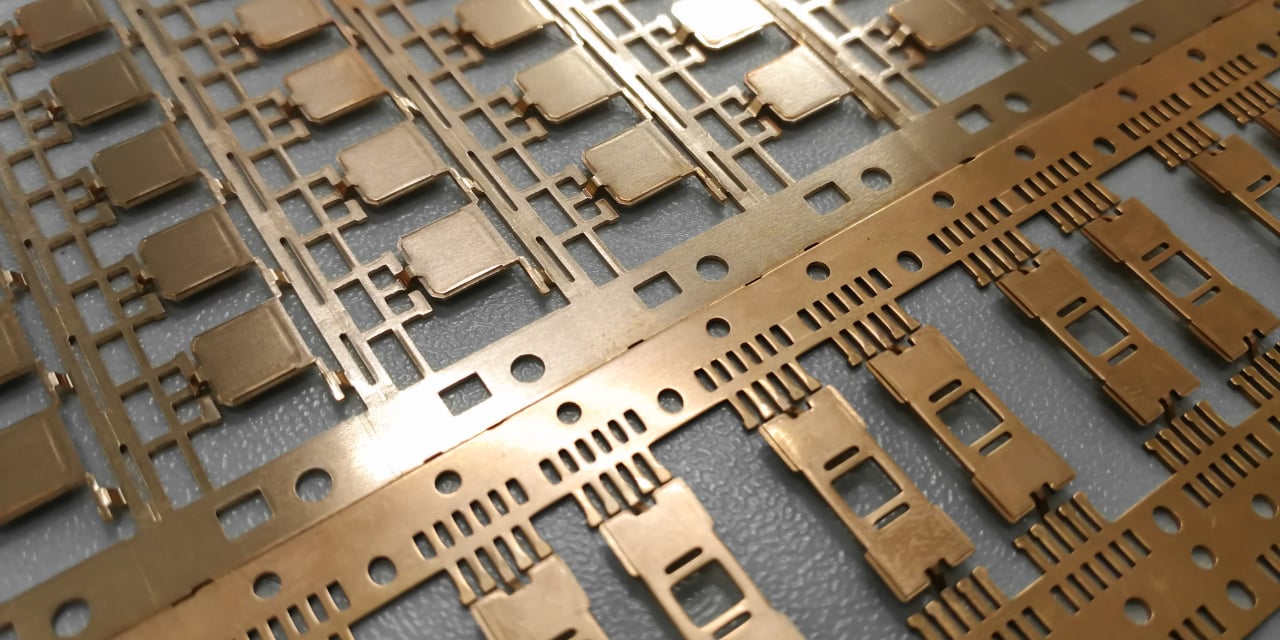When you think of copper, you may immediately imagine a penny or the Statue of Liberty with its well-known green patina. Copper is far more than a decorative metal, though. Copper, with its reddish-brown color, is an easily recognizable non-ferrous metal. Being non-ferrous makes copper non-magnetic. Copper's properties make it ideal for industrial applications, including metal stamping.
Copper has a variety of desirable mechanical and chemical properties, making it one of the most versatile and extensively used materials. Copper’s properties can be further enhanced through the use of metal alloys making it the ideal choice for a wide range of metal stamping applications.
Copper Metal Stamping Characteristics
Malleable and Ductile
Copper is known for its malleability and ductility. It can be easily formed into tubes, wires, and other thin components without breaking. Even after the metal is hardened, it remains easy to work due to its ductility.
Good Conductor of Electricity and Heat
Copper is known for being a good conductor of electricity and heat. Copper is second only to silver in terms of conductivity. Copper is a cost-effective material option and is often seen in electrical and HVAC, plumbing and power generation products.
Corrosion Resistant
Copper is resistant to neutral saline solutions, alkalis, water, non-oxidizing acids and high temperatures. Copper forms a stable oxide layer on its surface, known as a patina, which acts as a moisture barrier. To further improve the corrosion resistance, copper can be alloyed with other metals.
Antimicrobial Properties
Copper features antimicrobial properties that make materials made with this metal ideal for food processing and medical applications. The antimicrobial properties make copper-based materials easy to sanitize. The sanitary properties mean copper can be used for creating hygienic surfaces that are easy to clean.
Appealing Finish
Copper is valued for its attractive reddish-brown finish, which makes it ideal for manufacturing decorative parts or architectural accents. Even the green patina that occurs with oxidation can be considered appealing in some applications.Sustainable
Copper can be used across a wide range of temperatures. Sunlight and cold temperatures do not cause copper to become brittle.
Copper Alloys
Copper alloys are metal alloys that have copper as their principal component. Typical copper alloys are known for their corrosion resistance and include:
- Brass
- Phosphor Bronze
- Aluminum Bronze
- Beryllium Copper
- Silicon Bronze
- Cupernickel
- Nickel Silvers
Industries That Use Copper Metal Stampings in Their Products
Copper has features that make it an appropriate metal to use across multiple industries. Copper is ideal for applications that require thin parts that can withstand various temperatures.
- Medical: Copper can be used to effectively carry signals to diagnostic tools or small body implants when it is encapsulated correctly. Because copper is easily drawn into wire and is highly conductive, it has become possible to embed small copper wires within these devices.
- Aerospace: Copper has been used in aviation for years. Approximately 2% of the total weight of the Boeing 747 was copper, much of it used in the wiring of the electrical system. In an aircraft's electrical system, copper can be found in busbars, bonding, and as lock wire.
- Electronics: Copper conductors, external cables, and printed circuit boards are all used in the electronics industry. Copper has been used to replace aluminum in computer chips made by IBM and Motorola. Manufacturers have found that using copper creates faster operating speeds and greater integration of circuits.
- Automotive: In the US automotive industry, approximately 55 pounds of copper can be found in a typical vehicle. Electrical components account for 45 pounds of copper, with the other 10 pounds being in nonelectrical components. Copper wires in a luxury car could stretch to approximately one mile in length.
Parts Typically Stamped from Copper
Copper can be used to make intricate parts that are usable across multiple industries. Some of the parts that are typically created from copper include:
- Tubing and Coils
- Connectors
- Computer Chips
- Electrical Wiring
- Busbars
- Terminals
- Lead Frames
- Switch components
- Relay components
- Medical devices
- Motors
- Transformers
- Cables
Is Copper the Right Metal for Your Application?
Choosing the correct metal for your metal stamping project can mean the difference between long-lasting products and the need to revisit the design process. If you are unsure which metal is appropriate for your particular needs, discuss your options with your metal stamper. They can help you choose the correct metal for whatever project you have across multiple industries.


